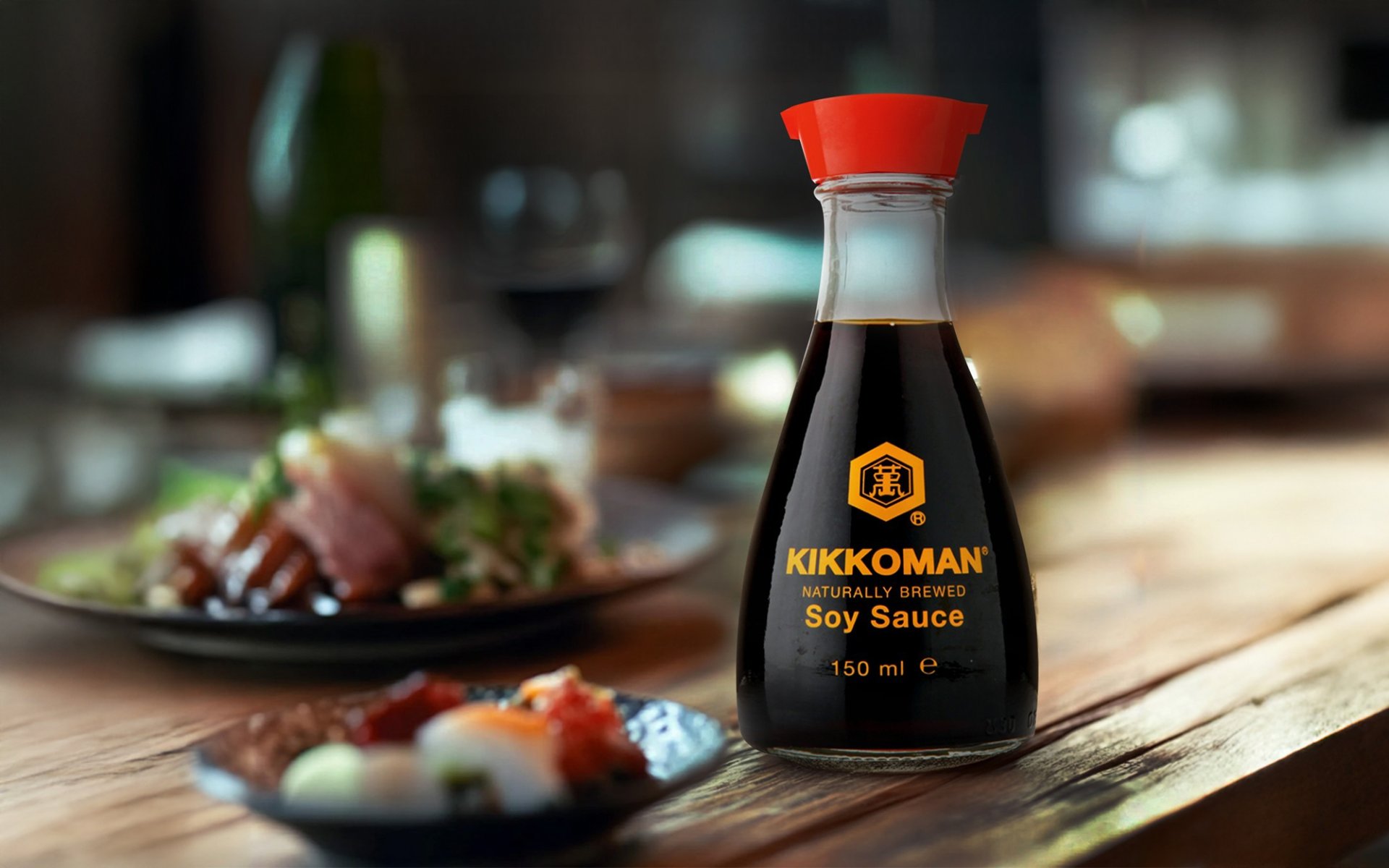Kikkoman

When it comes to soy sauce, the name Kikkoman immediately comes to mind for many. The iconic red-capped Kikkoman bottle found on nearly every Japanese restaurant table worldwide is no coincidence; its a symbol of over 300 years of accumulated expertise and innovation. Today, Rimping Supermarket invites you to discover the story behind Kikkomans successa global soy sauce brand that is more than just a condiment, but an integral part of culinary culture enjoyed worldwide.
From China to Japan : The Origins of Soy Sauce
The story of soy sauce begins approximately 2,000 BCE, when the culture of fermented soybean sauces spread from China to Japan. Initially, the Chinese commonly made "doujiang," known in Japan as "miso." This sauce was popular among the general populace. However, its flavor was not entirely favored by the Japanese imperial court. Consequently, the Japanese refined this knowledge, developing "shoyu" (soy sauce) in a style preferred by the royalty.
In its early days, the center of shoyu production in Japan was Kyoto, the imperial capital in the 17th century. The shoyu industry flourished there. By the 19th century, when Japan shifted its political center from Kyoto to "Edo" (present-day Tokyo), the shoyu industry expanded into this new capital. New companies in Edo began producing more shoyu, which distinguished itself from Kyoto's shoyu by being less salty yet richer in flavor, a unique characteristic of shoyu from this region.
The Merger of 8 Companies : The Birth of Kikkoman
Among the numerous shoyu producers across various regions, shoyu from Noda City, Chiba Prefecture, gained significant popularity. This was due to the large number of shoyu-producing companies located there. Driven by strong potential and foresight, in 1917, eight leading shoyu manufacturers in Noda City decided to merge, forming a single company under the name "Kikkoman." This historic consolidation immediately made Kikkoman the largest shoyu producer in Japan, a position it has maintained, holding the number one market share in Japan ever since its founding.
Conquering the Global Market : Kikkoman's Expansion into the U.S.
As domestic growth reached its peak, Kikkoman made a pivotal decision in 1950 to expand into international markets, targeting the United Statesa crucial ally in Japan's post-World War II reconstruction.
Initially, breaking into the U.S. market proved challenging. Americans were largely unfamiliar with Japanese cuisine, and Japanese restaurants were scarce at the time. Kikkoman adopted a shrewd marketing strategy: advertising soy sauce as a versatile condiment suitable for various dishes. They particularly highlighted its compatibility with grilled meats and steaks, familiar and beloved dishes among Americans.
This strategy proved remarkably successful! Many Americans tried Kikkoman soy sauce with steaks and other Western dishes, discovering that it enhanced the flavor incredibly. With rising popularity, Kikkoman decided to open its first soy sauce production facility in the U.S. in 1973, and sales continued to climb, eventually surpassing domestic sales in Japan.
Kikkoman Today : Superior Quality
Today, Kikkoman soy sauce is cherished and recognized worldwide, not only for its excellent taste but also for its meticulously selected high-quality ingredients and unique production process:
- Four Core Ingredients: Kikkoman soy sauce is made from four fundamental components: soybeans, wheat, water, and salt.
Natural Fermentation: These ingredients are carefully combined and allowed to ferment naturally over several monthsa complex and time-consuming process. This results in a soy sauce with a rich, complex, and distinct flavor profile, unlike typical soy sauces found on the market. - Lower Sodium Content: A key factor that sets Kikkoman apart and contributes to its popularity is its relatively lower sodium content. With approximately 1,000 mg of sodium per tablespoon, it offers a healthier option for those looking to manage their sodium intake.
Versatility and Cultural Heritage
Kikkoman is truly a versatile condiment. Its rich and balanced flavor makes it perfect for:
- Marinating Meats and Seafood: Enhancing flavor and tenderizing ingredients.
Enhancing Stir-fries, Soups, and Stews: Adding complexity and depth of flavor. - Seasoning: For salad dressings, sauces, and other dips.
Beyond being a culinary condiment, Kikkoman soy sauce has become a cultural symbol in Japan, honored as part of the nation's culinary heritage and consistently featured in traditional Japanese cuisine.
In recent years, Kikkoman has expanded its product line to meet diverse consumer demands, introducing various other sauces such as Teriyaki sauce, Ponzu sauce, sushi seasoning, and many more. These products continue to adhere to the same high production standards, using premium ingredients and processes identical to the original Kikkoman soy sauce, ensuring that every Kikkoman product delivers excellent taste and quality.
You can find a wide range of Kikkoman products and other premium ingredients for Japanese and international cuisine at all Rimping Supermarket branches.


